The Tzolkin (Count of Days)
The word Tzolkin means 'count of days' and is applied to a 260-day cycle which was commonly observed in Precolumbian Mesoamerica. The Tzolkin survives amongst contemporary Mayan peoples and in a multitude of derivative forms worldwide. The origins of the Tzolkin - like its ancient name - have been lost along time's path but it was inherited by the Maya from the Olmecs, whose previously dominant influence was on the wane, sometime before 500 BC.
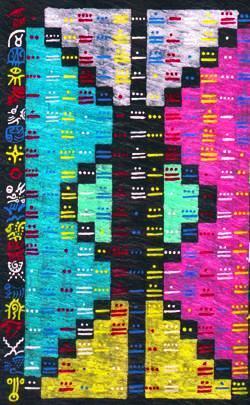 The 260 day cycle corresponds closely with both the human gestation period and the maize based agricultural cycle which is still extant in the Mayalands today. John Major Jenkins argues that the origin of the cycle may lie at an ancient Mysteries School at Izapa in Mexico. By consensus this area of Mexico is believed originally to have manifested the Tzolkin and, as JMJ points out, there are 260 days between the second and first zenith passages of the sun at this latitude. This divides the year into one period of 260 days and one of 105 days. There is evidence to suggest that the former were days used for growing and harvesting food whilst the latter were frequently occupied in ceremonial and 'captive-taking' events.
The 260 day cycle corresponds closely with both the human gestation period and the maize based agricultural cycle which is still extant in the Mayalands today. John Major Jenkins argues that the origin of the cycle may lie at an ancient Mysteries School at Izapa in Mexico. By consensus this area of Mexico is believed originally to have manifested the Tzolkin and, as JMJ points out, there are 260 days between the second and first zenith passages of the sun at this latitude. This divides the year into one period of 260 days and one of 105 days. There is evidence to suggest that the former were days used for growing and harvesting food whilst the latter were frequently occupied in ceremonial and 'captive-taking' events.
The Tzolkin is still used as a fixed agricultural calendar which begins sometime in mid-February and acts as guide for the timing of many activities such as groundclearance, 1st sowing, weeding, 2nd sowing and so on. In this guise the Tzolkin is ageless and is not tied to the epoch-making counts otherwise associated with the Maya - rather, it acts as a reusable activity guide whose origins are closely tied to the regions in which it is used.
The Tzolkin is a repeating cycle of 260 days which is made up of a cycle of 13 being repeated 20 times. The Tzolkin is read from the top left (1 Imix), down 20 places to the bottom of the first column (7 Ahau) up to the top of the second column (8 Imix) and so on. The cycle of 13 repeats itself in such a way that, over the 260 days, all 20 of the glyphs in the key to the left of the Tzolkin appear 13 times. The 260 day cycle ends with 13 Ahau. Most versions of the Count of Days start with 1 Imix though this is not universal.
13 Tones of HunabKu
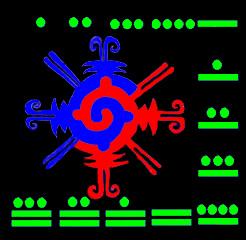 The cycle of 13 is a numeric cycle and is associated with the creative pulse of Spirit. The dark space in the Milky Way was recognised by the Classic Maya as the central point in our Galaxy and - at least in myth - was regarded as the source and destination of all things.
Imagine that Spirit is not resting at the centre of Creation but, instead, is pulsing the energy of re-Creation through the Cosmos at every moment and in cycles of 13 - from 13 millennia and beyond to 13 nanoseconds and beyond. All creatures and all things are in the way of this Creative pulse and so is the whole of time. This is the breath which connects us all.
The cycle of 13 is a numeric cycle and is associated with the creative pulse of Spirit. The dark space in the Milky Way was recognised by the Classic Maya as the central point in our Galaxy and - at least in myth - was regarded as the source and destination of all things.
Imagine that Spirit is not resting at the centre of Creation but, instead, is pulsing the energy of re-Creation through the Cosmos at every moment and in cycles of 13 - from 13 millennia and beyond to 13 nanoseconds and beyond. All creatures and all things are in the way of this Creative pulse and so is the whole of time. This is the breath which connects us all.
The Mayan numeric system consists of 3 symbols only two of which are used to express the cycle of thirteen. A dot represents 1 unit, a bar represents 5. The other digit looks like a seed and is representative of 20. This is what the thirteen numbers of the creative pulse look like.
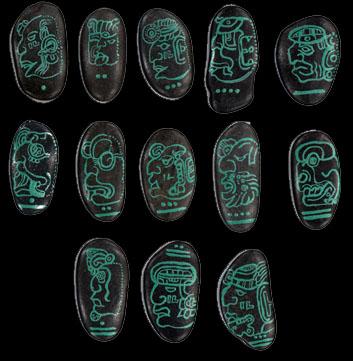 This thirteen day cycle builds like a wave for the first 5 or 6 days, and peaks on days 7, 8 & 9 - day 8 is sometimes referred to as the crown of the 13 day pulse and is a preferred day for Ceremony and Shamanic activity in many of the Mayalands. Day 10 - indeed the number ten generally - was not looked on favourably by the Maya and days 10 through to 12 are associated with completion, release and preparation for the next pulse of days. In a sense 13 holds the accomplishment that is 12 and that the seed that is 1.
This thirteen day cycle builds like a wave for the first 5 or 6 days, and peaks on days 7, 8 & 9 - day 8 is sometimes referred to as the crown of the 13 day pulse and is a preferred day for Ceremony and Shamanic activity in many of the Mayalands. Day 10 - indeed the number ten generally - was not looked on favourably by the Maya and days 10 through to 12 are associated with completion, release and preparation for the next pulse of days. In a sense 13 holds the accomplishment that is 12 and that the seed that is 1.
Each Mayan number is also associated with and governed by an individual god. Sometimes the numbers are represented by the heads of these gods with (or without) reference to the bar and dot numeric system.
The Ahau Kin
The cycle of 20 days is associated with the glyphs which can be seen in the first column on the left hand side of the Tzolkin. These are the evolutionary 'lenses' through which mankind - and indeed allkind - receives, interprets and acts upon the energies of Time pulsing from the Heart of All. Each of the 20 glyphs has characteristics which are associated with the days on which it falls and the people who are born on those days. For example, here is the daysign 4 Ik.
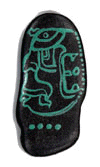
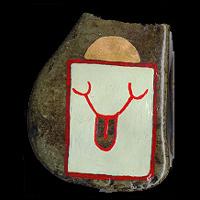 Ik is strongly associated with the wind, with primal turbulence and irresistable change. So it is that people born on Ik days are said to tend towards the blustery and capricious. This natural tendency is as much necessary to, and part of, the loom of life as charity and eloquence. The selfnature of each daysign is amplified by its associated number such that 1 Wind is in essence more gentle (though probably no less predictable) than the end-of-cycle 13 Wind. The number four is traditionally associated with the establishment of the cardinal world - our 4 Ik will ensure that it is similarly physically established and recognised.
Ik is strongly associated with the wind, with primal turbulence and irresistable change. So it is that people born on Ik days are said to tend towards the blustery and capricious. This natural tendency is as much necessary to, and part of, the loom of life as charity and eloquence. The selfnature of each daysign is amplified by its associated number such that 1 Wind is in essence more gentle (though probably no less predictable) than the end-of-cycle 13 Wind. The number four is traditionally associated with the establishment of the cardinal world - our 4 Ik will ensure that it is similarly physically established and recognised.
The following twenty symbols have common Maya names throughout Mesoamerica but the appearance and style of the glyphs varies greatly with geographical and historical location. Similarly the translation of the names and resonances of these ancient guides is often locally - even personally - defined. Here is an introduction to the 20 faces of the Ahau Kin after the style of the Quiche Maya of Guatemala.
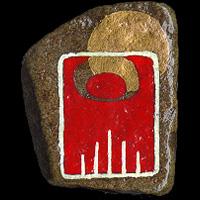 Imix is variously translated as 'dragon' or 'crocodile'
and is associated with the very beginning of things and the primal
unconscious. It is the abundance of potential and all that is not
extant. The source of all and the place to which all returns, Imix is
the beginning and end of the transformative cycle. Imix is where energy
resides as instinct, memory and potential.
Imix is variously translated as 'dragon' or 'crocodile'
and is associated with the very beginning of things and the primal
unconscious. It is the abundance of potential and all that is not
extant. The source of all and the place to which all returns, Imix is
the beginning and end of the transformative cycle. Imix is where energy
resides as instinct, memory and potential.
 Ik means 'wind' or 'breath'. This second face of the
Ahau Kin may be imagined as an echo of that primal wind which first
blew across the Great Deep as represented by Imix. It is the wind of
release which brings vitality in rain and destruction by storm. Ik is
the Breath which animates us all and the breath through which we
communicate.
Ik means 'wind' or 'breath'. This second face of the
Ahau Kin may be imagined as an echo of that primal wind which first
blew across the Great Deep as represented by Imix. It is the wind of
release which brings vitality in rain and destruction by storm. Ik is
the Breath which animates us all and the breath through which we
communicate.
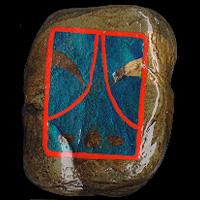 Akbal means 'night' and 'darkness'. It is redolent of the dark places under the earth, the lightless temples atop the pyramids of the ancient Maya and of the dark spaces within our own minds. All these are places of great spiritual and physical wealth. Akbal is the regenerating power of the still and the dark - the place of rebirth and transformation. Akbal is the vastness discovered when Breath (Ik) moved on the face of the Deep (Imix).
Akbal means 'night' and 'darkness'. It is redolent of the dark places under the earth, the lightless temples atop the pyramids of the ancient Maya and of the dark spaces within our own minds. All these are places of great spiritual and physical wealth. Akbal is the regenerating power of the still and the dark - the place of rebirth and transformation. Akbal is the vastness discovered when Breath (Ik) moved on the face of the Deep (Imix).
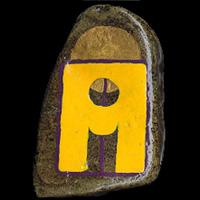 Kan means variously 'seed', 'corn' and 'lizard' - all are widespread representatives of fecunditiy, summer and the South. The fourth face of the Ahau Kin is strongly associated with the physical realm and the power of renewal and growth. Kan is observation of and reverence for that which is seen to work in the natural world. Kan is Spirit occupying the vastness of Akbal.
Kan means variously 'seed', 'corn' and 'lizard' - all are widespread representatives of fecunditiy, summer and the South. The fourth face of the Ahau Kin is strongly associated with the physical realm and the power of renewal and growth. Kan is observation of and reverence for that which is seen to work in the natural world. Kan is Spirit occupying the vastness of Akbal.
 Chicchan means 'serpent'. Chicchan is the energy which lies coiled at the base of the spine and calls to our oldest and most instinctive drives. Serpent wisdom worldwide is essentially amoral, beyond opposites, and is strongly connected with both spiritual and sexual activity. Chicchan is a survivor, a seer-below-the-surface and is the first light of conscious instinct borne of Kan.
Chicchan means 'serpent'. Chicchan is the energy which lies coiled at the base of the spine and calls to our oldest and most instinctive drives. Serpent wisdom worldwide is essentially amoral, beyond opposites, and is strongly connected with both spiritual and sexual activity. Chicchan is a survivor, a seer-below-the-surface and is the first light of conscious instinct borne of Kan.
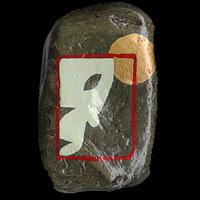 Cimi means 'death' and is representative of the act of transformation - both of self and others. Cimi is a bridge between worlds, a listener and communicator - a representative of sacrifice/forgiveness and release. Cimi is the enlivening link between the raw instinct of Chicchan and the accomplishment of Manik.
Cimi means 'death' and is representative of the act of transformation - both of self and others. Cimi is a bridge between worlds, a listener and communicator - a representative of sacrifice/forgiveness and release. Cimi is the enlivening link between the raw instinct of Chicchan and the accomplishment of Manik.
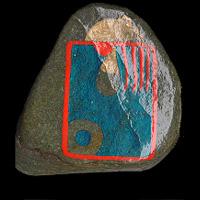 Manik means 'deer' and the glyph for Manik shows the hand of the hunter. Manik is the powerful and transformative seventh face of the Ahau Kin and is associated with accomplishment and the Craft of Life. The successful hunt requires that the hunter fully understands - even becomes one with - the life energy of the prey. This balance between hunter and hunted is imagined as wholeness rather than opposition and expresses the character of Manik. Manik is the knowledge and transformation manifested by the sacrifice/forgiveness of Cimi.
Manik means 'deer' and the glyph for Manik shows the hand of the hunter. Manik is the powerful and transformative seventh face of the Ahau Kin and is associated with accomplishment and the Craft of Life. The successful hunt requires that the hunter fully understands - even becomes one with - the life energy of the prey. This balance between hunter and hunted is imagined as wholeness rather than opposition and expresses the character of Manik. Manik is the knowledge and transformation manifested by the sacrifice/forgiveness of Cimi.
 Lamat means 'rabbit' and its primary association is with Venus and, consequently, rebirth and renewal. Lamat is a glyph of ripeness and vitality and is the physical manifestation - the result - of the eternal cycle of death, transformation and re-creation. The rabbit represented by the glyph is a creature who appreciates the fruits of the world created for him by the gods. Lamat is the seed sown by the movement and transformation which began with Imix.
Lamat means 'rabbit' and its primary association is with Venus and, consequently, rebirth and renewal. Lamat is a glyph of ripeness and vitality and is the physical manifestation - the result - of the eternal cycle of death, transformation and re-creation. The rabbit represented by the glyph is a creature who appreciates the fruits of the world created for him by the gods. Lamat is the seed sown by the movement and transformation which began with Imix.
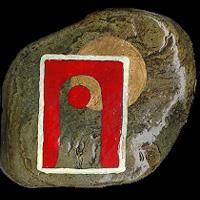 Muluc means 'water' and 'that which is gathered up'. It is the primal consciousness of Chicchan 'on the move'. Muluc is ineluctable universal movement - a kind of cosmic tide. This power can nurture or devastate and has all the preciousness and collective influence of water. This constant movement - like water - is central to the transformative cycles of all life forms on earth. Muluc is the link between the tentative individuated consciousness of Chicchan and Ben (kin 13)- the motive power of personal destiny. Muluc is the tide which gathers the individual towards community.
Muluc means 'water' and 'that which is gathered up'. It is the primal consciousness of Chicchan 'on the move'. Muluc is ineluctable universal movement - a kind of cosmic tide. This power can nurture or devastate and has all the preciousness and collective influence of water. This constant movement - like water - is central to the transformative cycles of all life forms on earth. Muluc is the link between the tentative individuated consciousness of Chicchan and Ben (kin 13)- the motive power of personal destiny. Muluc is the tide which gathers the individual towards community.
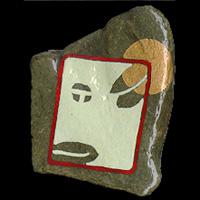 Oc is the 10th face of the Ahau Kin. Oc means 'gateway' and 'dog'. Oc is in many ways the archetypal dog - living close to his instincts and intimately connected with constancy, loyalty and unconditional love. Oc is our guide through the transformative darkness of Akbal (kin 3). Oc is the power which navigates our private underworld. Where logic and intellect fail, the faith and love of Oc become gateway and guide to our recurrence and renewal. Oc is individual consciousness become physical - in some Maya myth Oc is represented by a foot whose paces mark the very beginning, and end, of time.
Oc is the 10th face of the Ahau Kin. Oc means 'gateway' and 'dog'. Oc is in many ways the archetypal dog - living close to his instincts and intimately connected with constancy, loyalty and unconditional love. Oc is our guide through the transformative darkness of Akbal (kin 3). Oc is the power which navigates our private underworld. Where logic and intellect fail, the faith and love of Oc become gateway and guide to our recurrence and renewal. Oc is individual consciousness become physical - in some Maya myth Oc is represented by a foot whose paces mark the very beginning, and end, of time.
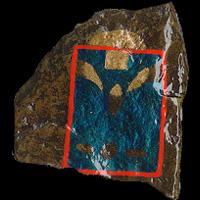 Chuen means 'monkey' and is associated in legend with artificers and craftsmen. This kin embodies all the arts and creative excellence. Creativity was a central part of the spiritual path to the ancient Maya and their predecessors. Chuen links sacred knowledge with creative artistry. Chuen is an intuitive trickster, humourist and performer. Chuen days are charged with innate knowledge of relationship and expression. Through this the physical consciousness experienced by Oc becomes co-creative and begins to affect the world.
Chuen means 'monkey' and is associated in legend with artificers and craftsmen. This kin embodies all the arts and creative excellence. Creativity was a central part of the spiritual path to the ancient Maya and their predecessors. Chuen links sacred knowledge with creative artistry. Chuen is an intuitive trickster, humourist and performer. Chuen days are charged with innate knowledge of relationship and expression. Through this the physical consciousness experienced by Oc becomes co-creative and begins to affect the world.
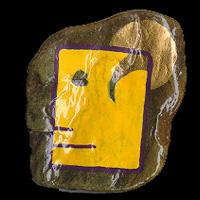 Eb has been taken to mean variously : 'tooth', 'human', 'grass', 'road-' or 'stair-way'. Eb is one of the yellow kin and is associated with the sensual and physical aspects of living. Eb is the road of life and, in some manifestations, the greening and enlightening of individual and planetary awareness. Eb is the dew of heaven, it is the inner lightning which animates all, it is consciousness walking in beauty and balance. All earthly kind belong to this road. Eb is individual spirit and authority and stands but one step from commUnity.
Eb has been taken to mean variously : 'tooth', 'human', 'grass', 'road-' or 'stair-way'. Eb is one of the yellow kin and is associated with the sensual and physical aspects of living. Eb is the road of life and, in some manifestations, the greening and enlightening of individual and planetary awareness. Eb is the dew of heaven, it is the inner lightning which animates all, it is consciousness walking in beauty and balance. All earthly kind belong to this road. Eb is individual spirit and authority and stands but one step from commUnity.
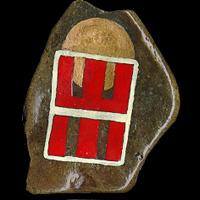 The meaning of Ben is lost but it is associated with reeds and corn. Ben is connected in myth with Venus and perpetual renewal. Corn is central to tales of creation and rebirth as it is central to life. Ben follows the 'gathering together' of Muluc (kin 9) and is a collective expression of the individual power of Eb in the form of communal authority. Ben presents a complex image combining inner- and outer-authority, spiritual and physical motivation. Ben is the essence of both conquest and relationship and is the tribal manifestation of primal consciousness.
The meaning of Ben is lost but it is associated with reeds and corn. Ben is connected in myth with Venus and perpetual renewal. Corn is central to tales of creation and rebirth as it is central to life. Ben follows the 'gathering together' of Muluc (kin 9) and is a collective expression of the individual power of Eb in the form of communal authority. Ben presents a complex image combining inner- and outer-authority, spiritual and physical motivation. Ben is the essence of both conquest and relationship and is the tribal manifestation of primal consciousness.
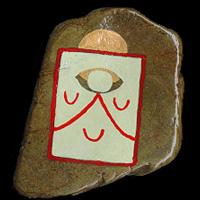 Ix means 'jaguar' and is Santo Mundo, the name of the commemoration of the world. Ix is the temporal and spiritual wealth which consciousness brings to the world and is associated primarily with the night and our intuitive selves. Ix is a powerful hunter, preeminent within his domain. Ix is the wealth of the sacred earth - Santo Mundo - the Lord of our transmutation. This, the 14th face of the Ahau Kin, is a manifestation of the 'coyopa', or sacred energy, which underlies earthquakes and storms. Under the shamanic and transformative influence of Ix, the community - as represented by Ben - starts to remember a more cosmic identity.
Ix means 'jaguar' and is Santo Mundo, the name of the commemoration of the world. Ix is the temporal and spiritual wealth which consciousness brings to the world and is associated primarily with the night and our intuitive selves. Ix is a powerful hunter, preeminent within his domain. Ix is the wealth of the sacred earth - Santo Mundo - the Lord of our transmutation. This, the 14th face of the Ahau Kin, is a manifestation of the 'coyopa', or sacred energy, which underlies earthquakes and storms. Under the shamanic and transformative influence of Ix, the community - as represented by Ben - starts to remember a more cosmic identity.
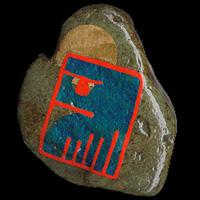 Men means 'eagle' - a totem of shamans worldwide - or 'knower'. This is one of the strongest faces of the 20 Kin. Men is associated with truth, farsight and the ability to soar beyond confinement. Men is a sign of strong spirit powerfully motivated. Where Akbal, Cimi and Ix are associated with the intuitive darkliness of transformation, Men represents the clear light of conscious thought. Through the transformation wrought upon Ben by the intuitive wealth of Ix is born Men - with the vision and purpose of a spiritual warrior and the sharp discernment which comes from unique perspective.
Men means 'eagle' - a totem of shamans worldwide - or 'knower'. This is one of the strongest faces of the 20 Kin. Men is associated with truth, farsight and the ability to soar beyond confinement. Men is a sign of strong spirit powerfully motivated. Where Akbal, Cimi and Ix are associated with the intuitive darkliness of transformation, Men represents the clear light of conscious thought. Through the transformation wrought upon Ben by the intuitive wealth of Ix is born Men - with the vision and purpose of a spiritual warrior and the sharp discernment which comes from unique perspective.
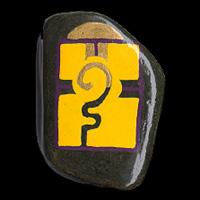 Cib means 'vulture' or 'wax' and its primary resonance is of forgiveness and karmic catharsis. The transforming power of darkness is represented throughout Mayan thought and
Cib embodies this process in the time cycles and individuals of earth. Cib is the achievement of AtOneMent. Cib is representative of successful movement from shadow to light, the recognition and enactment of each ending as a new beginning. Cib is the fourth of the yellow Kin and remains earthy in the wake of the soaring cognition of Men.
Cib means 'vulture' or 'wax' and its primary resonance is of forgiveness and karmic catharsis. The transforming power of darkness is represented throughout Mayan thought and
Cib embodies this process in the time cycles and individuals of earth. Cib is the achievement of AtOneMent. Cib is representative of successful movement from shadow to light, the recognition and enactment of each ending as a new beginning. Cib is the fourth of the yellow Kin and remains earthy in the wake of the soaring cognition of Men.
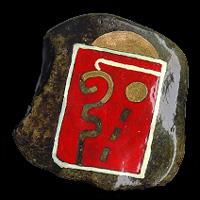 Caban means 'incense' and'earth(quake)'. Caban is the last of the red kin and is number 17 overall. Caban is associated with inspiration and First Mother - the initiator and source of all creative activity. The contemporary Caban refers to incense and connects this glyph specifically with mind. Caban is the consciousness of change within community and, often, provides the ideas which are the precursors of change. Caban is the inspiration which is created by the atonement of Cib. Caban has a strategy for creation born, originally, of the primal potential of Imix - the first of the 20 Kin.
Caban means 'incense' and'earth(quake)'. Caban is the last of the red kin and is number 17 overall. Caban is associated with inspiration and First Mother - the initiator and source of all creative activity. The contemporary Caban refers to incense and connects this glyph specifically with mind. Caban is the consciousness of change within community and, often, provides the ideas which are the precursors of change. Caban is the inspiration which is created by the atonement of Cib. Caban has a strategy for creation born, originally, of the primal potential of Imix - the first of the 20 Kin.
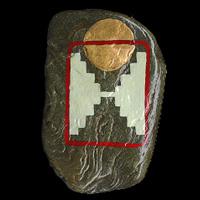 Etznab means 'flint' and'knife' and is the last of the white Kin, number 18 overall. Etznab has some of the resonance of the Christian Sword of Truth - the very edge at which the polarity of light and shadow is established. Etznab may be the sword of the warrior or the blade of the curandero, it is the awareness of opposites and, thus, is the essence of resolution. Etznab shares characterisitics both with the sword that initiates dynamic separation and the mirror which provides a point of resolution between reflection and reflected. This is the possibility of reunification - depolarisation, at-one-ment, 'paradise regained' - embodied in the evolutionary times and souls of earthkind.
Etznab means 'flint' and'knife' and is the last of the white Kin, number 18 overall. Etznab has some of the resonance of the Christian Sword of Truth - the very edge at which the polarity of light and shadow is established. Etznab may be the sword of the warrior or the blade of the curandero, it is the awareness of opposites and, thus, is the essence of resolution. Etznab shares characterisitics both with the sword that initiates dynamic separation and the mirror which provides a point of resolution between reflection and reflected. This is the possibility of reunification - depolarisation, at-one-ment, 'paradise regained' - embodied in the evolutionary times and souls of earthkind.
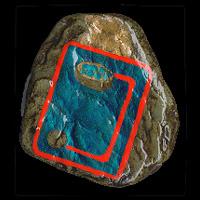 Cauac means 'storm' - the last of the blue kin and the 19th out of 20. Cauac collects, intensifies and releases waves of change - it shares the watery relentlessness of Muluc (Kin 9)with the strategy and inspiration of Caban (kin 17). Cauac is a transformative pulse born of the fundamental potentials recognised within Etznab and is totality of movement. From the heart of the mountain to the top of the pyramid of heaven, Cauac at once encourages and embodies the becoming of that which is to be.
Cauac means 'storm' - the last of the blue kin and the 19th out of 20. Cauac collects, intensifies and releases waves of change - it shares the watery relentlessness of Muluc (Kin 9)with the strategy and inspiration of Caban (kin 17). Cauac is a transformative pulse born of the fundamental potentials recognised within Etznab and is totality of movement. From the heart of the mountain to the top of the pyramid of heaven, Cauac at once encourages and embodies the becoming of that which is to be.
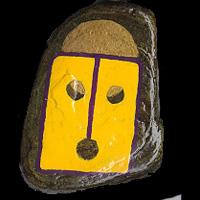 Ahau means 'Lord' and represents connection with our ancestral soul and with the epoch making events of both past and future. Ahau follows the radical creative change of Cauac with an embodiment of continuity in the form of access to the Pool of Souls. Ahau is completion - the primal unconscious become conscious commUnion. Ahau is one of the twenty as well as an avatar of the twenty - as are we all. The Quiche Maya envisage a 'sack of days' which is borne continually by each of us as we emerge from each new cycle of time. Ahau is a reminder of this continuity as the cycle moves towards the next Kin ... a more informed, but still primal, Imix ...
Ahau means 'Lord' and represents connection with our ancestral soul and with the epoch making events of both past and future. Ahau follows the radical creative change of Cauac with an embodiment of continuity in the form of access to the Pool of Souls. Ahau is completion - the primal unconscious become conscious commUnion. Ahau is one of the twenty as well as an avatar of the twenty - as are we all. The Quiche Maya envisage a 'sack of days' which is borne continually by each of us as we emerge from each new cycle of time. Ahau is a reminder of this continuity as the cycle moves towards the next Kin ... a more informed, but still primal, Imix ...